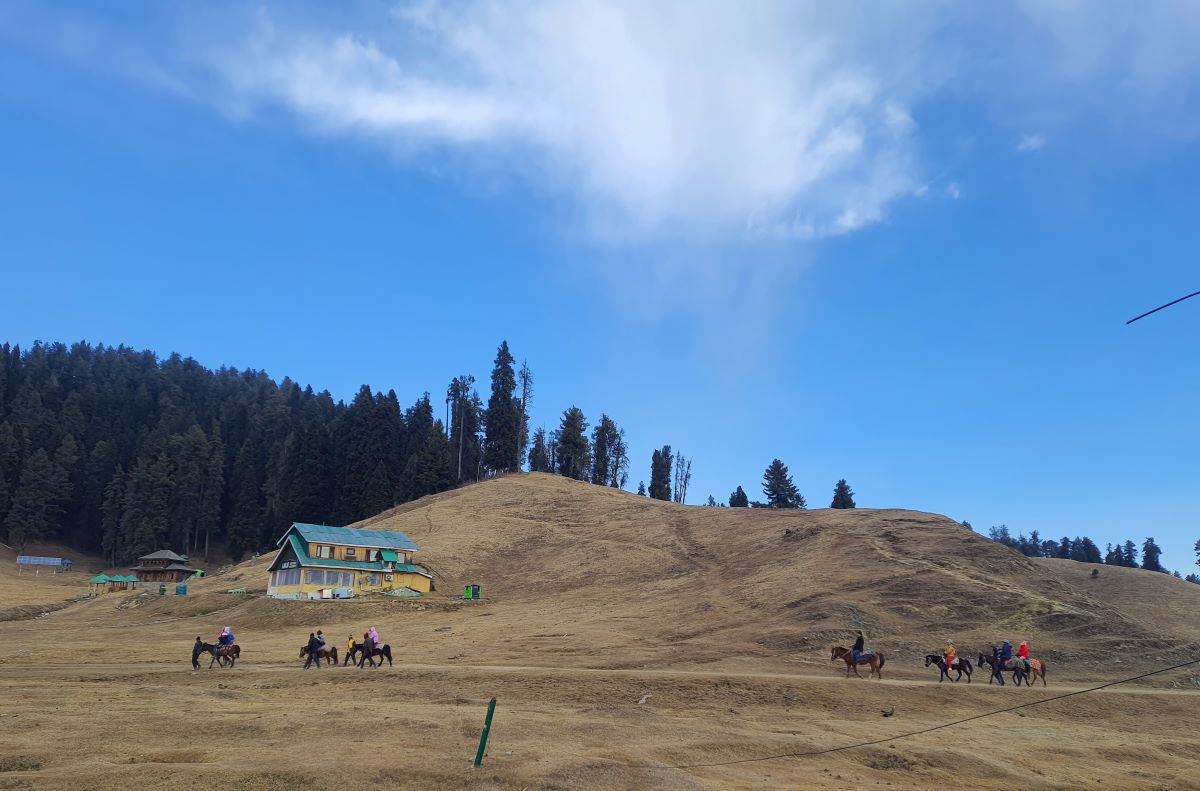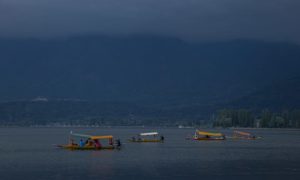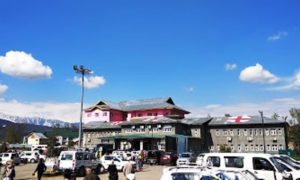Srinagar: Kashmir is witnessing a prolonged dry spell this winter, with no sign of snowfall that the region typically witnesses during this time. As the winter season draws to a close, concerns are mounting among Kashmiri residents as the absence of snowfall poses serious threats to glaciers, agriculture, horticulture, water bodies, and introduces a new worry in the form of forest fires.
The picturesque landscapes of Kashmir, renowned for their pristine beauty and snow-capped mountains, have undergone a stark transformation as the region grapples with an unexpected weather anomaly. The absence of snowfall, a phenomenon unusual for this time of year, is sounding alarm bells for the local population and environmentalists alike.
One of the primary concerns stemming from this prolonged dry spell is its potential impact on the region’s glaciers. Snowfall is crucial for maintaining the health of glaciers, serving as a source of replenishment that contributes to the water supply in the region. With the lack of snowfall, there is a growing apprehension about the reduced water inflow into these glaciers, which could have cascading effects on downstream water resources.
Agriculture and horticulture, which form the backbone of Kashmir’s economy, are also under threat due to the absence of snowfall.
The winter season usually provides a protective layer of snow that insulates crops and orchards from extreme cold temperatures. The dry spell exposes these vital sectors to the risk of frost damage, potentially impacting yields and livelihoods of local farmers.
Furthermore, the diminished water flow from the melting snow adds stress to the region’s water bodies. Lakes and rivers, integral to the ecological balance of Kashmir, face the risk of reduced water levels, affecting aquatic ecosystems and potentially leading to water scarcity for both human and agricultural needs.
Adding to these concerns is the emergence of forest fires, a new and alarming threat in the wake of the prolonged dry spell. The dry vegetation, devoid of moisture typically provided by snow, has become highly susceptible to ignition. Forested areas are now at the mercy of flames, posing a serious threat to biodiversity, wildlife habitats, and the overall health of the region’s ecosystems.
Authorities are grappling with the multifaceted challenges posed by this unexpected turn of events. Firefighting efforts are underway to combat the forest fires, with emergency responders working tirelessly to contain the spreading flames. Additionally, local communities are being urged to exercise caution and adhere to safety measures to prevent further incidents and casualties.
As Kashmir navigates through this environmental crisis, there is a pressing need for comprehensive strategies to address the immediate challenges and plan for the long-term implications of the prolonged dry spell.
The absence of snowfall not only disrupts the seasonal rhythm of Kashmir but also underscores the vulnerability of ecosystems and livelihoods in the face of unpredictable climate patterns.
Environmental experts and policymakers are called upon to collaborate in finding sustainable solutions to safeguard Kashmir’s natural heritage and mitigate the impact of the ongoing crisis.














